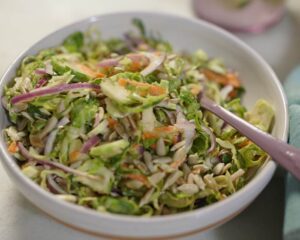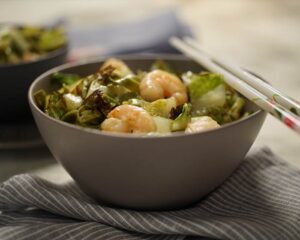Eating raw food used to be something you did without a second thought, like munching a stalk of celery or snacking on a banana. But now “eating raw” gets quotation marks, describing a movement that proponents claim holds the key to weight loss and optimal health. If the proliferation of raw-food products at the health-food store is any indication, it’s a trend that has gotten a serious foothold. For someone who can hardly imagine getting through the winter without a steaming hot bowl of soup just about every day, going totally raw sounds like a chilling proposition. But there are some benefits to eating foods in their uncooked state that are worth exploring.
What is ‘raw food’?
You might think the answer is obvious, but there are nuances, and it depends on whom you ask. Most raw-food advocates define it as an edible that has not been heated above a certain point; the maximum is about 116 degrees, the temperature at which a large portion of a food’s naturally occurring enzymes are destroyed. These enzymes, they contend, are critical to the food’s nourishing power. (More on that in a minute.) But food could be dehydrated at a low temperature or be slightly warm to the touch and still be considered raw.
The enzyme equation
Cooking does destroy enzymes in foods, and that can make a difference in nutritional potency. The cruciferous vegetables Brussels sprouts and broccoli, for example, contain enzymes that activate certain antioxidants in the vegetables. Cooking destroys these catalysts and thus reduces the power of the protective nutrients we ingest.
But far from rendering the food “dead,” as many raw advocates claim, cooking also increases our absorption of other valuable nutrients, such as the lycopene in tomatoes. Plus, many food enzymes are the opposite of helpful; some make nutrients harder for our bodies to absorb, so we actually reap more from them when the enzymes are destroyed. Regardless, it’s important to note that humans do not rely on plant enzymes to process our nutrients; we make our own for that important job. Once we consume plant enzymes, they are not used by our bodies for chemical reactions; rather, they are simply broken down by the acids in our digestive tract.
Raw benefits
Raw foods retain more vitamin C and many B vitamins, as well as the good bacteria in foods like sauerkraut that are all destroyed with heat. Also, eating raw eliminates the possibility of the harmful compounds produced when food is cooked at high temperatures, such as the advanced glycation end products (AGEs) that form when food is browned. AGEs can accumulate in our bodies if eaten in excess. They increase inflammation and are linked with signs of aging, heart disease and diabetes.
Perhaps most important, eating produce raw means you are consuming it in its most unprocessed form, which is usually a good thing from a health standpoint. Take an apple, for example. Eaten fresh, it is full of phytonutrients, minerals and fiber. Peeled and cooked down to applesauce, it loses much of its nutritional value but still has some benefits. Take it a step further by smothering it in pastry and sugar for a pie and you have another ballgame entirely — good, yes, but not nearly as good for you. My guess is that’s a big reason many raw foodists find they lose weight and feel better: They eat more unprocessed, whole produce and less pie and the like.
The upside of cooking
But cooking has its pluses, too. Heating foods actually concentrates and activates some antioxidants, making them more potent and more easily absorbed. That’s why tomato sauce has considerably more antioxidant oomph than fresh tomatoes and why cooked carrots are richer in beta-carotene than raw. Also, cooking breaks down plant cell walls, and that, as I mentioned, releases many nutrients, making them more available to our bodies for digestion. Heating produce also makes the fiber more soluble, which helps regulate blood sugar and digestion. And, importantly, cooking destroys many harmful bacteria.
The bottom line
Raw and cooked foods each offer distinct benefits, so don’t think of it as an either-or proposition. Mix it up, sticking to minimally processed options, and eat more produce in general. How about soup and salad?





